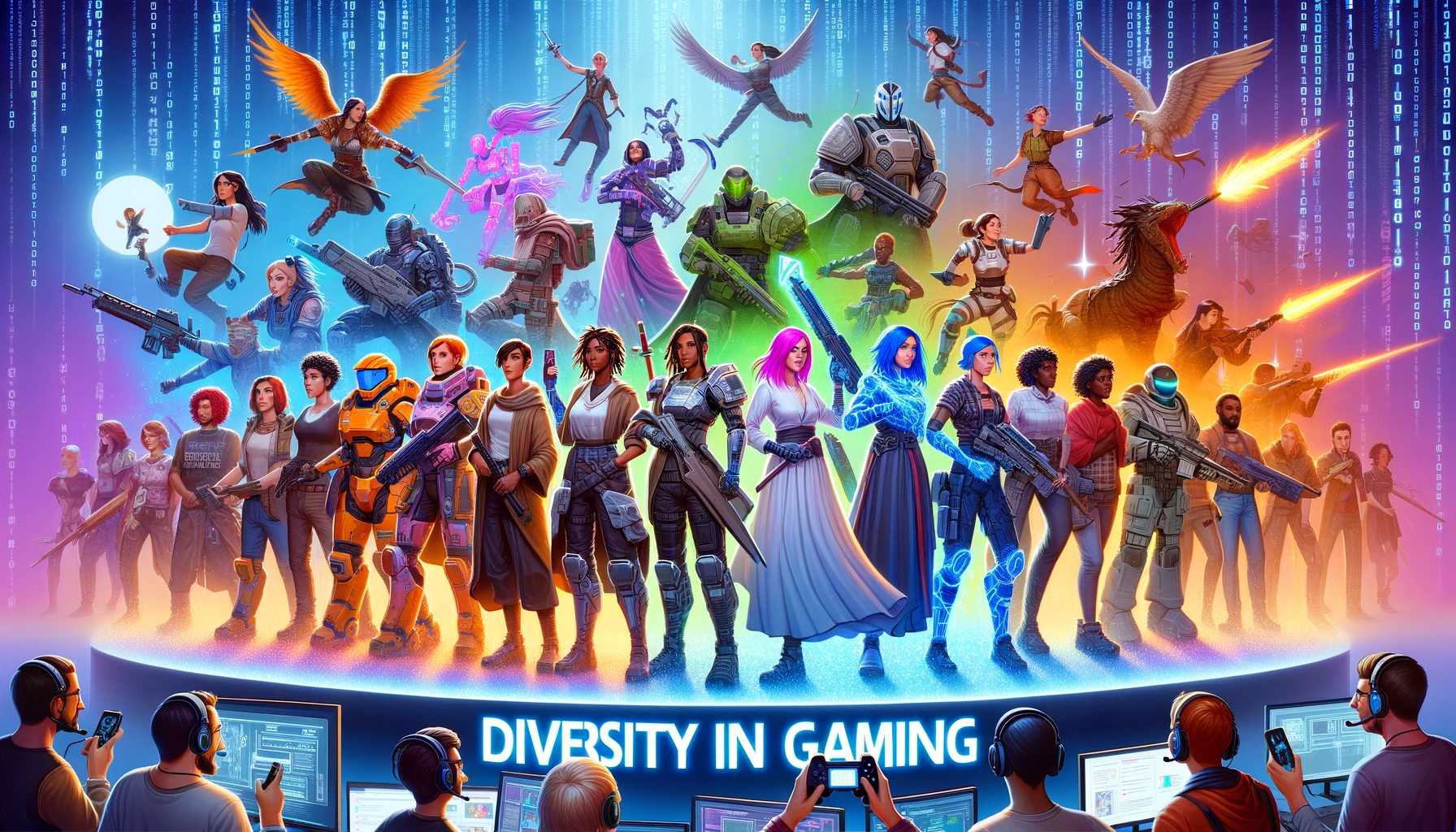Introduction:
Gender representation in video games has long been a topic of debate, with critics pointing out the prevalence of stereotypes and the lack of diversity. However, in recent years, there has been a noticeable shift towards more nuanced portrayals of gender in gaming. In this blog post, we'll explore the evolution of gender representation in video games, from traditional stereotypes to the progression towards more inclusive and diverse narratives.
The Era of Stereotypes:
For decades, video games often reinforced traditional gender stereotypes, with male characters typically portrayed as strong, aggressive heroes, while female characters were relegated to roles such as damsels in distress or sexualized sidekicks. Think of classic titles like "Super Mario" or "The Legend of Zelda," where the male protagonist rescues the helpless princess.
These stereotypes not only limited the types of roles available to female characters but also perpetuated harmful societal norms. Young players were often exposed to narrow and unrealistic depictions of gender, which could influence their perceptions and behaviors in the real world.
However, as the gaming industry grew and diversified, so too did the demand for more inclusive narratives. Players began to push back against one-dimensional portrayals of gender and called for greater representation and diversity in their favorite games.
The Rise of Inclusivity:
In response to this demand, game developers started to introduce more complex and diverse characters into their narratives. We began to see female protagonists taking center stage in action-packed adventures, challenging the notion that only men could be heroes. Games like "Tomb Raider" and "Mirror's Edge" showcased strong, independent women who were fully capable of holding their own in a male-dominated world.
Moreover, the portrayal of gender became more fluid and nuanced, with characters representing a spectrum of identities beyond traditional male and female archetypes. Games like "The Last of Us Part II" and "Life is Strange" explored themes of gender identity and sexuality with sensitivity and depth, resonating with players who longed for more authentic representation.
Progression and Challenges:
While significant strides have been made towards more inclusive gender representation in video games, challenges still remain. Despite the increasing presence of diverse characters, stereotypes and tropes persist, albeit in subtler forms. Female characters may still be sexualized or objectified, and transgender characters are often relegated to minor roles or treated insensitively.
Additionally, the gaming community itself can be resistant to change, with some players pushing back against efforts to diversify content or accusing developers of "political correctness." However, it's essential to recognize that diverse representation benefits everyone, fostering empathy, understanding, and a richer gaming experience for players of all backgrounds.
Moving Forward:
As we look towards the future of gaming, it's clear that the conversation around gender representation will continue to evolve. Game developers have a crucial role to play in challenging stereotypes, promoting diversity, and creating more inclusive narratives.
By listening to the voices of players and striving for authenticity and empathy in their storytelling, developers can help shape a gaming landscape where everyone feels seen and represented. Ultimately, the power of video games lies in their ability to tell diverse stories and connect players from all walks of life.
The Evolution of Gender Representation:
In the early years of video gaming, gender representation was often limited and stereotypical. Female characters were frequently relegated to damsel-in-distress roles, existing solely as objects to be rescued by male protagonists. Meanwhile, male characters typically embodied traits of strength, bravery, and heroism, reinforcing traditional notions of masculinity.
As video game technology advanced, so too did the complexity of gender representation. The 1990s saw the rise of iconic female protagonists such as Lara Croft from the Tomb Raider series, who challenged stereotypes with her intelligence, athleticism, and agency. However, even these characters often fell victim to hypersexualization, with exaggerated physical features and impractical attire overshadowing their depth and character development.
Stereotypes in Modern Gaming:
While strides have been made in recent years to diversify gender representation in video games, stereotypes persist in many mainstream titles. Female characters are still frequently portrayed as hypersexualized, with unrealistic body proportions and skimpy clothing designed to appeal to a presumed male audience. Conversely, male characters often conform to narrow ideals of masculinity, emphasizing physical strength and aggression while downplaying emotional depth and vulnerability.
Moreover, gender roles in gaming narratives continue to reinforce traditional norms, with male characters often cast as the primary heroes and female characters relegated to supporting roles or love interests. This perpetuation of gender stereotypes not only limits the creative potential of video game storytelling but also reinforces harmful societal attitudes toward gender.
Progression Toward Inclusivity:
Despite these ongoing challenges, there are signs of progress in the realm of gender representation in video games. Independent developers, in particular, have been at the forefront of creating more inclusive and diverse gaming experiences. Games such as "Gone Home," "Celeste," and "Life is Strange" feature compelling narratives with well-rounded characters who defy traditional gender norms and offer players the opportunity to explore issues of identity and representation.
Furthermore, increased awareness and advocacy within the gaming community have led to greater demands for inclusivity and diversity in game development. Major studios are beginning to take notice, incorporating diverse characters and storylines into their flagship titles. From "The Last of Us Part II" to "Assassin's Creed: Valhalla," there is a growing recognition of the importance of representing a range of genders, identities, and experiences in gaming.
Conclusion:
Gender representation in video games has come a long way from its early days of stereotypes and limitations. While progress has been made, there is still work to be done to ensure that gaming reflects the diverse world we live in. By challenging stereotypes, embracing inclusivity, and listening to the voices of players, the gaming industry can continue to push boundaries and create more meaningful and impactful experiences for everyone.
